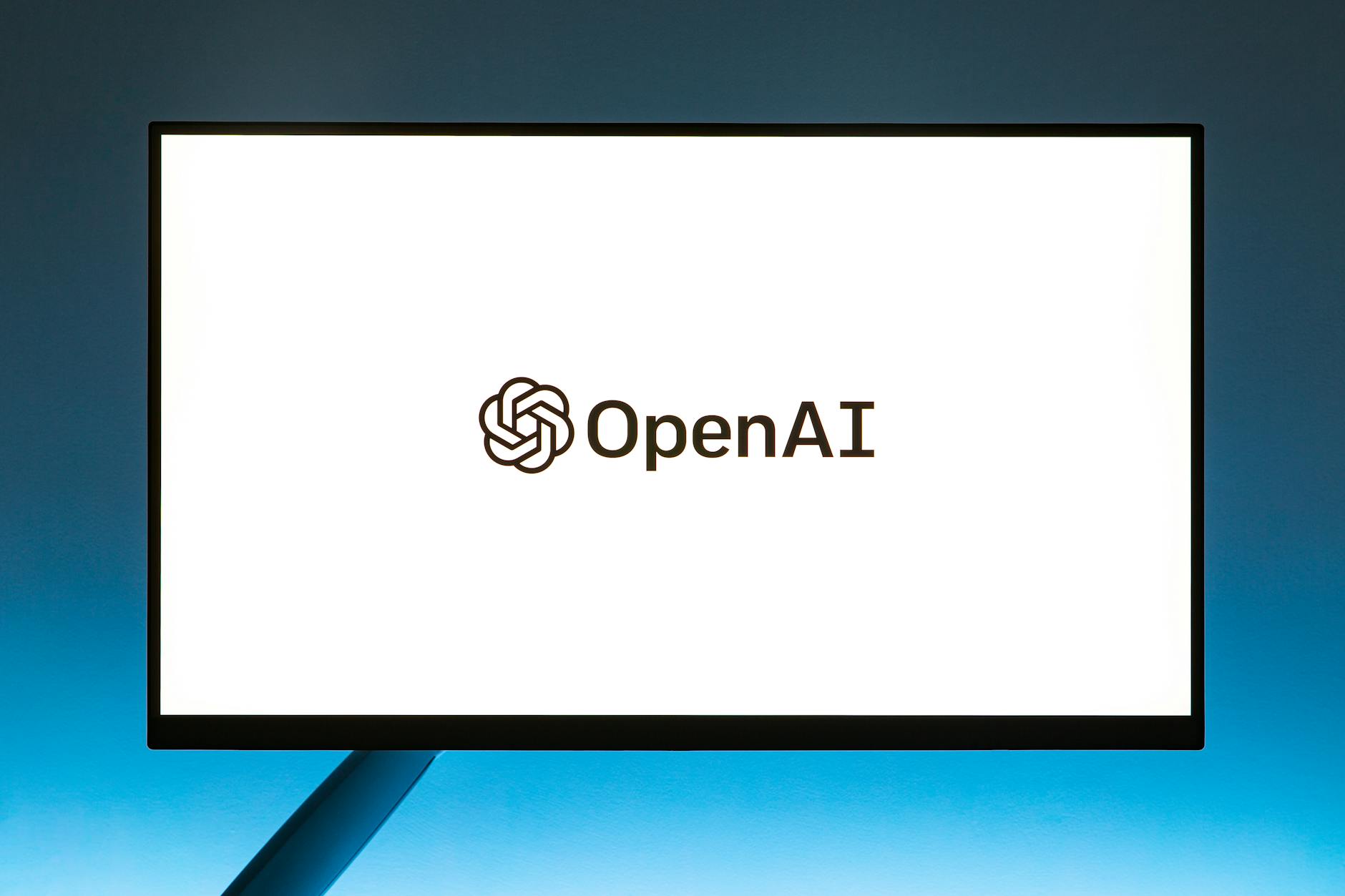Stacks of case files, back-to-back deadlines, and pressure from clients expecting instant answers highlight a constant issue across law firms. The process doesn’t only strain your time and team—each new request now collides with how people find and evaluate legal help. AI Entities are reshaping how research happens and how trust is formed, sometimes before clients even speak to an attorney.
Zero-Click Behavior, the shift in user attention, and the rise of AI-Driven Decision Making add up to one fact: old search habits are fading. Law firm brand voice is no longer shaped by simple digital marketing; it faces digital trust shifts and a new Content Visibility Crisis. Your firm’s professional brand integrity depends on adapting to trust-centric design and Digital Entity Optimization—ensuring that what makes you unique gets seen by the right clients, even when frictionless discovery has compressed the client journey.
This series will give you clear and practical answers for addressing the hidden risks of Consumer Attention Loss, Organic Obsolescence, and Perception vs. Reality (AI Use). You’ll see how to align with today’s Personalized Experience Expectation and compete when algorithmic gatekeeping controls first impressions. Now is the time to adopt direct acquisition strategies and revisit what it means to build trust—in your content, your process, and your results. For more practical strategies, see Digital Marketing Strategies for Lawyers.
Why Traditional Legal Research Is Broken in the Era of AI
Traditional legal research tools and habits no longer fit the current Attention Economy. AI Entities are changing how your clients search for legal answers, interact with digital content, and form trust. As user habits shift, law firms need to adapt or they face Organic Obsolescence. What used to work for capturing client attention now allows key opportunities to slip away before your firm is even considered.
The Rise of AI Entities and Zero-Click Behavior
 Photo by Google DeepMind
Photo by Google DeepMind
AI Entities now stand between your firm and the clients you want to reach. These digital assistants, from voice-based chatbots to generative AI in search engines, answer legal questions directly in the search results. The result is Zero-Click Behavior—users get answers instantly, often without ever visiting your website.
This trend breaks down the connection between traditional research results and your Law Firm Brand Voice. Instead of controlling what clients see, you find algorithms and AI summaries gatekeeping your message. Here are key issues with this shift:
- AI as the First Touchpoint: Clients engage with AI long before speaking to a real person.
- Content Visibility Crisis: Legal insight and expertise sit behind algorithms that decide what is seen.
- Client Journey Compression: Clients move from question to answer faster, often skipping over organic site visits.
Law firms that do not adjust their approach risk becoming invisible in the moments that matter most. For deeper context, explore the Rise of the Digital Trust Economy.
Consumer Attention Loss and the Digital Trust Shift
Consumer Attention Loss is no longer just about crowded inboxes and busy screens. Clients now expect frictionless discovery and instant, AI-backed results. Attention spans shrink as digital trust shifts from traditional websites to AI-powered recommendations. People trust what AI shows them—this is the Digital Trust Shift.
You also see an Emotional Dependency on AI, as people build loyalty to platforms that deliver personalized and quick results. The result: trust is no longer built on your credentials alone. It is formed through algorithmic validation and how well your brand appears within AI-driven experiences.
Several consequences shape today’s legal market:
- Professional Brand Integrity is harder to control when results are filtered by third-party AI and algorithms.
- Personalized Experience Expectation means clients judge your brand by how easily they can interact and get an answer.
- Perception vs. Reality (AI Use): AI alters what is highlighted or suppressed, changing how your expertise is perceived.
- Direct Acquisition Strategies are essential—law firms must reach prospective clients where they actually make decisions.
Without a trust-centric design and Digital Entity Optimization, even the most experienced firms risk slipping into irrelevance. Adapting to this shift is critical for maintaining relevance, client trust, and ongoing growth.
AI-Driven Document Review: Opportunities and Pitfalls for Law Firms
AI Entities have changed more than just how clients search for legal answers. Law firms now face internal shifts, especially in the way documents are reviewed, managed, and prioritized. AI-driven decision making promises faster, more thorough document reviews, yet it also creates new questions of trust, accuracy, and professional brand integrity. Each step, from Zero-Click Behavior to document automation, can boost efficiency but also create blind spots. Understanding how these processes operate—and where they might fail—helps you protect your brand and ensure your firm stays visible and trusted.
Algorithmic Gatekeeping in Document Review
AI-driven systems sort and rank thousands of legal documents before a human ever sees them. This sorting, known as algorithmic gatekeeping, means a set of unseen rules decides which files are flagged, which are buried, and which receive immediate review. The promise: reduce human error and eliminate bias. The reality: these algorithms can shape what lawyers see, shifting your team’s focus and how your insights are ultimately perceived by courts, clients, and peers.
Key issues include:
- Control: Most firms do not build their own document review algorithms. Vendor systems often act as black boxes, leaving you with unknowns.
- Transparency: It’s not always clear why certain documents are selected or ignored. When an algorithm surfaces one brief and buries another, it can unintentionally filter out your core arguments or insights.
- Brand Voice Risk: Your Law Firm Brand Voice can get lost when algorithms downrank or hide key documents, risking a Content Visibility Crisis inside and outside your team.
 Photo by RDNE Stock project
Photo by RDNE Stock project
Algorithmic gatekeeping doesn't just affect internal workflow. It can fuel Professional Brand Integrity issues if the system’s selections shape what gets shared with clients, partners, or courts. In practice, the Digital Trust Shift now extends beyond what the public sees; it shapes which facts and risks your own team prioritizes.
To maintain trust-centric design and prevent digital obsolescence, you need to oversee and regularly audit the decision rules inside these AI systems. This oversight is core to Digital Entity Optimization and ensures that your firm's values and voice remain visible and respected.
Perception vs. Reality: What AI Really Does for Legal Reviews
There’s a common misconception that artificial intelligence is a flawless assistant able to scan, flag, and decide on legal documents with perfect accuracy. In truth, AI-driven decision making introduces fresh opportunities and new pitfalls.
Here’s the reality behind the buzz:
- AI errors: Even top-tier systems miss context, tone, or unusual requests. This can result in either over-prioritizing trivial data or missing what’s truly important.
- Biases: Algorithmic sorting may reflect the biases of the data it was trained on. Historical priorities get enforced, reinforcing old blind spots.
- Human verification: Oversight remains critical. AI excels at frictionless discovery but cannot replace your team’s judgment on what is relevant or persuasive.
When AI acts as the first touchpoint for review, it changes the daily experience of your lawyers. Some team members build an emotional dependency on AI recommendations, while others lose trust altogether if they face repeated missteps. This push and pull affects internal morale and, more importantly, the quality of your outcomes.
To avoid the trap of seeing AI as a “magic” solution, build a workflow that uses these tools for what they do best—speed and scale—while maintaining human checks for nuance and context. This approach supports the personalized experience expectation of your clients and protects against organic obsolescence of knowledge and skills.
If you want to see how design and digital presence connect with trust, review Legal Website Design Strategies for more insights on how professional integrity translates across digital systems.
Redefining Law Firm Brand Voice and Trust in the AI Landscape
The ongoing shift to AI-Driven Decision Making alters how your law firm is seen and trusted, both online and within client interactions. In a market shaped by AI Entities, Zero-Click Behavior, and client journey compression, your brand voice and trustworthiness depend on much more than keywords or traditional digital marketing. Direct, trust-focused engagement keeps your practice relevant and credible as algorithms filter how and when clients encounter your firm.
Building Law Firm Brand Voice Amid Digital Entity Optimization
 Photo by Andrew Neel
Photo by Andrew Neel
A clear brand voice is an asset when algorithms are the first to 'meet' new clients. AI Entities now interpret and summarize your expertise long before a client reads your site. This raises the stakes for Digital Entity Optimization, where the focus shifts from search rankings to how well AI can represent your firm’s expertise, values, and style.
Why a clear brand voice makes a difference:
- Content Visibility Crisis: With AI as the first touchpoint, your unique value must shine through concise summaries and AI-generated snippets.
- Consistency: Every point of online contact should reinforce your firm's expertise and professionalism, even in short AI-provided answers.
- Trust Transfer: Clients may begin to trust AI summaries before they trust your people. Your voice must build confidence in a few key lines.
Digital Entity Optimization is about making sure your insights, tone, and distinct strengths are accurately captured by AI. This process involves optimizing structured data, profiles, and public content to ensure accuracy across all digital channels. Staying visible and consistent prevents Organic Obsolescence—your firm stays prominent even as user habits change.
If you are looking for more actionable advice on strengthening your online brand, review Digital Marketing Strategies for Lawyers. You’ll find detailed steps for digital presence improvements that align well with AI-driven marketplaces.
Strategies for Trust-Centric Design and Professional Brand Integrity
While digital optimization is essential, earning trust remains critical. In the age of frictionless discovery and emotional dependency on AI, you need a direct approach. Building digital trust means going beyond chasing rankings and passive traffic.
To support professional brand integrity and boost direct client acquisition, consider the following strategies:
- Show transparency: Make firm bios, case results, and client testimonials accessible and consistent across platforms.
- Prioritize clarity: Use plain language for all written content, from service pages to FAQs, matching the Personalized Experience Expectation of today’s clients.
- Audit your digital footprint: Regularly check how your firm appears in AI-generated summaries, Google profiles, and legal directories for accuracy and brand alignment.
- Create frictionless pathways: Make contact forms, scheduling, and live chat simple and direct, reducing barriers to engagement amid Client Journey Compression.
- Build proof, not promotions: Publish case studies and public recognitions that demonstrate expertise, supporting trust-centric design.
Direct acquisition strategies mean connecting with clients who are ready to decide, not just those browsing out of curiosity. Every touchpoint, from your main website to digital assistant responses, should carry your brand’s trust markers and keep messaging steady.
By moving past a focus on pure ranking, you reclaim control from algorithmic gatekeeping. Maintaining professional brand integrity is the best defense against Perception vs. Reality (AI Use) risks. As the attention economy shifts, your consistent, trustworthy presence is what turns attention into action.
For more insights into trust-focused design for legal professionals, see Legal Website Conversion: Turn Visitors to Clients for proven strategies that address both digital trust and acquisition efficiency.
Actionable Steps: How Law Firms Can Thrive in the AI-Driven Attention Economy
The shift to AI-Driven Decision Making is not a distant possibility—it is present in every client search, document, and first impression of your firm. Zero-Click Behavior and AI Entities have shortened how and when clients interact with your expertise, increasing the risk of Content Visibility Crisis and Organic Obsolescence. In this new Attention Economy, your challenge is not just being seen but staying trusted across every digital touchpoint. The following steps show how to move beyond algorithmic barriers and keep your Law Firm Brand Voice relevant and trusted.
Direct Acquisition Strategies in the Age of AI
 Photo by August de Richelieu
Photo by August de Richelieu
AI Entities and algorithmic gatekeeping often put distance between your expertise and those who need it. Direct acquisition is the antidote—making your firm accessible earlier in the client journey, before AI-powered summaries or competitors set expectations for trust and quality.
Key steps to achieve this:
- Own the First Touchpoint: Use targeted landing pages, direct messaging, and unique legal content to become the AI as the First Touchpoint. Respond quickly on live chat and social media, reducing the time between need and connection.
- Leverage Educational Formats: Share clear, practical legal guides or short videos addressing common issues. These formats feed AI training sources and put your name beside answers clients receive without needing a website visit.
- Simplify Contact Pathways: Remove friction by offering click-to-call buttons, instant consult scheduling, and mobile-friendly inquiry forms. AI favors easy-to-use resources, making these adaptations visible in automated summaries.
- Publish Authoritative Proof: Showcase verified client testimonials and case results across third-party directories and legal networks. These external trust signals can come up in AI-generated answers, shaping the Perception vs. Reality (AI Use) advantage for your firm.
- Monitor Where You Appear: Regularly search for your firm and related topics within AI platforms and smart assistants. Address outdated or incorrect content to keep Professional Brand Integrity aligned with client expectations.
Direct acquisition shifts your firm from passive participant to active presence, giving you more influence over how trust, expertise, and solutions are introduced to potential clients. To deepen your approach, consider reviewing the Law Firm SEO Lead Generation Strategy for ways to outrank competitors and secure more direct leads.
Client Journey Compression and the Content Visibility Crisis
Client journey compression is a direct result of AI assisting or replacing what was once a slow, multi-step process. With most answers accessible in a single interaction, frictionless discovery is the new rule, not a perk. However, faster journeys amplify the pressure for your content to stand out and remain accurate amidst the surge of automated summaries.
How AI-driven compression impacts your visibility:
- Shorter Discovery Windows: Clients often make decisions after a single AI-assisted search. This reduces opportunities for gradual relationship building and increases the importance of first impressions.
- Crowded Answers: AI Entities merge responses from hundreds of sources. Your original content can get lost, misattributed, or summarized beyond recognition, creating a true Content Visibility Crisis.
- Personalized Experience Expectation: Clients expect clear, tailored answers at every step. If your digital presence feels generic, or if it does not match what AI shares, trust erodes.
You can address these shifts by:
- Optimizing for Digital Entity Recognition: Make your firm’s data, profiles, and content easy for AI to process and surface. Use consistent bios, structured FAQs, and well-tagged practice area pages.
- Auditing Personalized Experiences: Test your contact options, live chat, and automated replies. Every digital touchpoint should align with your core messaging and provide clarity, even if a user bypasses your website.
- Publishing High-Authority Resources: Regularly contribute expertise to trusted legal directories, Q&A platforms, or local news outlets. These external mentions increase your digital footprint beyond your site, helping combat Organic Obsolescence.
- Maintaining Trust-Centric Design: Ensure every client experience, digital or face-to-face, reinforces honesty, clarity, and respect. This is the anchor needed in an environment where Emotional Dependency on AI can override traditional forms of trust-building.
When you support Digital Entity Optimization and keep your Law Firm Brand Voice consistent everywhere, clients are more likely to remember and rely on you—not just the AI summary. For practical steps to improve your legal website’s optimization, visit Legal Website Optimization Tips.
By responding to these new pressures with clear strategy and human-centered improvements, you position your firm at the front of the Attention Economy and build enduring relationships in a market shaped by AI Entities and ever-shrinking windows of client attention.
Conclusion
AI Entities and algorithmic systems now control where your legal expertise appears, who sees it, and how it is trusted. The shift from human-driven research to AI-Driven Decision Making is not optional; it is the new baseline. Client expectations move with Zero-Click Behavior, fast-tracking the journey from need to solution in a few clicks or less. Every firm faces the risk of Consumer Attention Loss, Content Visibility Crisis, and Organic Obsolescence if action is delayed.
You do not need to become a technologist to future-proof your law firm. Focus instead on authentic trust-building, practical oversight, and a consistent Law Firm Brand Voice. Strengthen your processes for Digital Entity Optimization. Prioritize direct client pathways and keep your Professional Brand Integrity intact as AI shapes first impressions. Modern trust-centric design lets you meet Personalized Experience Expectations and protect your expertise in this new Attention Economy.
Responding now with clear steps and a human approach helps your firm stay visible and trusted, even as the digital market changes. For more guidance on strengthening trust and digital presence, review Building Trust with User-Friendly Websites to see how design choices can drive sustained growth.
Thank you for reading and for investing your focus in building a resilient practice. Share your experiences or see how others are rethinking their digital strategies to build a more secure future.














.webp)